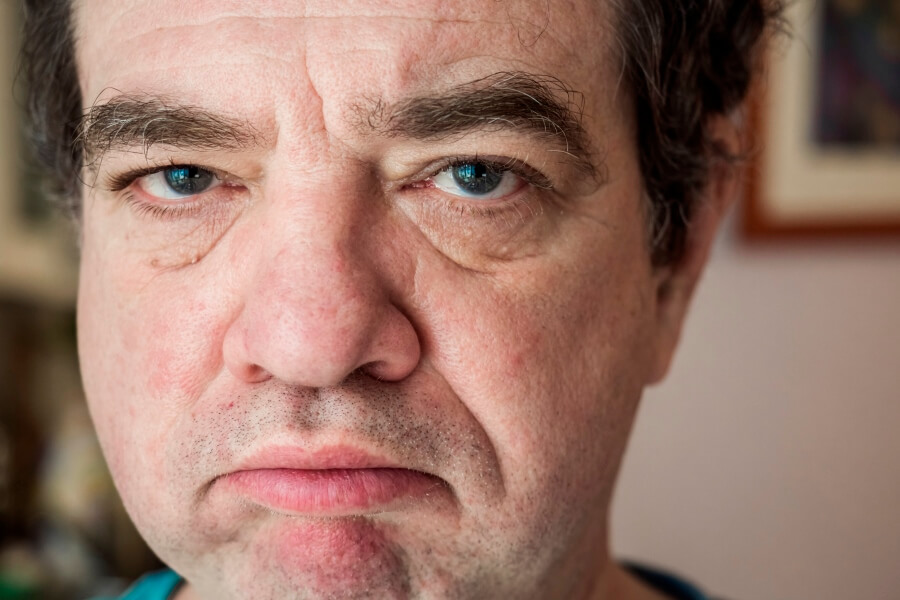“Alcoholic nose,” or “drinker’s nose,” has long been associated with chronic and excessive alcohol consumption. Characterized by a bulbous and red nose, it surprises many people that this condition is actually called rhinophyma—a subtype and severe form of rosacea. This chronic inflammatory skin disorder causes the nose to become enlarged, red, and bumpy over time.
But why does rhinophyma tend to get worse with alcohol? Is there treatment for rhinophyma available? Below, we dig into these questions and more.
Debunking the Myth: Alcohol and Rhinophyma
While alcohol consumption worsens rhinophyma, it doesn’t cause it. Rhinophyma is merely an advanced stage of rosacea. However, this type of rosacea is common in those with light skin and those of Eastern European, Irish, English, Scandinavian, or Scottish descent (cultures that are commonly associated with drinking).
Interestingly, alcohol consumption isn’t recommended to those with rosacea due to its ability to cause flare-ups. Overall, individuals with rosacea who consume alcohol often experience an increased risk of developing rhinophyma. So, what causes rosacea? Outside of alcohol, why does rhinophyma happen?
Causes and Risk Factors of Rhinophyma
The exact cause of rhinophyma is unknown. However, it frequently appears in individuals who have long-term rosacea.
As mentioned above, it’s more likely to appear in individuals with fair skin and particular backgrounds. Other risk factors may include:
- Being a white male
- Between 50 and 70 years of age
- Having a family history of rosacea
At the same time, it’s worth noting that these factors don’t mean you’ll have rosacea. Additionally, having rosacea doesn’t mean you’ll develop rhinophyma.
Symptoms and Progression
With the development of rhinophyma, the nose appears red, large, and bumpy. These changes often appear on the lower portion or tip of the nose. This is because this condition doesn’t impact the bone structure of the nose, just the skin.
Symptoms often include:
- Redness and swelling of the nose.
- Thickened skin with a bulbous appearance.
- Visible blood vessels.
- Enlarged pores and oily skin.
If left untreated, infections may develop due to trapped bacteria in the skin.
Impact of Alcohol on Rosacea and Rhinophyma
As previously mentioned, individuals with rosacea may develop rhinophyma with excessive alcohol consumption. This happens due to a few reasons, including:
- Alcohol can cause vasodilation, increasing blood flow to areas (like the nose) prone to rosacea.
- Alcohol triggers inflammation, which can lead to individuals with rosacea experiencing flare-ups.
- Drinking alcohol can lead to dehydration, leading to a compromised skin barrier and skin irritation.
- Some types of alcohol, like red wine, contain histamines. These can cause inflammation—a known trigger of rosacea flare-ups.
This is why many individuals with rosacea and other inflammatory conditions choose to avoid alcohol or, at the very least, consume it in moderation.
Treatment Options for Rhinophyma
The treatment of rhinophyma depends on its severity. Consulting with a dermatologist who knows you and your situation is best to determine a personalized treatment plan. This treatment plan may include medications, laser therapy, and even surgical procedures.
Medications
In some cases, infections arise due to the entrapment of bacteria in the inflamed skin. If this happens, oral antibiotics—like tetracycline—may be necessary to help manage and eliminate infection. With antibiotics, make sure you take the full course you’ve been prescribed. Even though symptoms may improve, a full course of antibiotics ensures it doesn’t return.
In addition to antibiotics, your dermatologist or doctor may prescribe or recommend topical treatments. For instance, low doses of isotretinoin (Accutane) may be prescribed to help address enlarged oil glands. Retinoids may also help with rhinophyma in its early stages.
Other medications may be used include metronidazole, ivermectin, oral isotretinoin, and brimonidine. Again, your exact treatment plan will depend on your specific situation and the severity of your rhinophyma.
Laser Therapy
If your rhinophyma is more advanced, laser therapy may be a worthwhile treatment option. It’s considered very effective and, for the most part, fairly painless.
Ablative lasers or electric currents can help reduce redness and remove excess tissue. However, carbon dioxide laser surgery is the most common form used for rhinophyma since it’s precise at removing damaged tissue, meaning it’s less likely to cause disfigurement of any kind. Alongside this precise laser therapy, dermabrasion may be used to remove any remaining damaged tissue.
Surgical Procedures
Surgery is usually considered solely for advanced cases. These procedures help reshape the nose while avoiding disruption of the cartilage tissue and causing minimal scarring. In some cases, cryosurgery—the use of extreme cold to remove damaged tissue—may be considered.
Addressing the Stigma
Rhinophyma is often referred to as an “alcoholic nose,” a label that carries significant social stigma. However, many skin specialists and experts view this as a misrepresentation of the condition’s true nature.
This article aims to foster greater empathy and understanding for this specific skin disorder. In many cases, rhinophyma is not linked to alcohol use, and assuming otherwise does a disservice to those affected.
At United Recovery Project, we aim to ensure you receive accurate information regarding substance use and associated health concerns. If you are worried about your or a loved one’s alcohol use, reach out to our caring and compassionate team today. Call us at 888-960-5121. Our consultations are completely confidential and focused on providing you with the information and answers you need and deserve.



